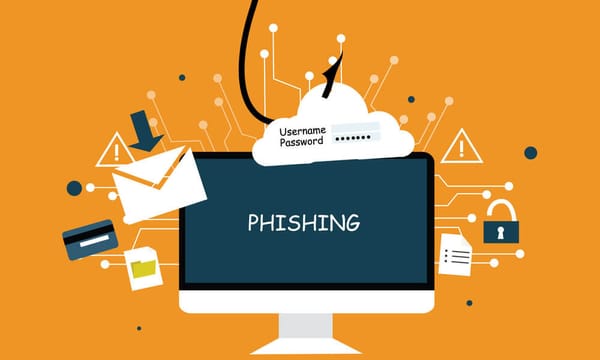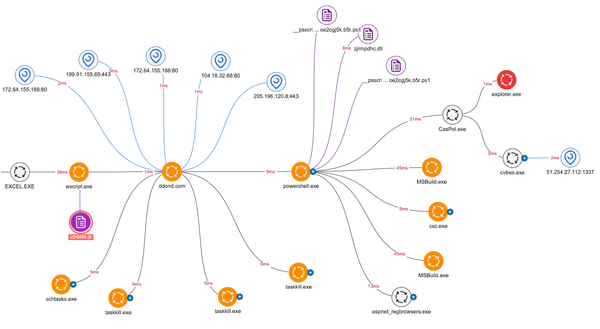Advanced Physical Penetration Testing: Methodologies, Tools, and Defense Strategies
Master advanced physical penetration testing methodologies with this comprehensive guide covering reconnaissance techniques, access control bypass methods, and effective security assessment strategies for security professionals.

While organizations increasingly focus on cybersecurity defenses, physical security vulnerabilities often remain overlooked despite representing a critical attack vector for sophisticated adversaries. Physical penetration testing—the authorized simulation of attacks against facilities, infrastructure, and personnel—provides crucial insights into real-world security gaps that purely technical assessments cannot identify. This comprehensive guide explores advanced methodologies, specialized tools, and professional approaches to conducting effective physical penetration tests, along with strategies for remediation and defense.
Understanding Physical Penetration Testing Fundamentals
Physical penetration testing involves authorized, controlled attempts to bypass physical security controls to evaluate their effectiveness against real-world threats:
Scope and Objectives Definition
Every effective physical penetration test begins with clearly defined parameters:
- Target identification: Specific facilities, areas, or assets to be tested
- Attack vectors: Permitted entry methods and techniques
- Success criteria: Defined objectives that constitute a successful test
- Excluded techniques: Prohibited methods (e.g., destructive entry, social engineering)
- Rules of engagement: Communication protocols, emergency procedures, and legal boundaries
Proper scoping is essential for both safety and efficacy. Unlike purely technical penetration testing, physical assessments carry inherent risks to personnel and property that must be carefully managed.
Physical Security Control Categories
Physical penetration tests typically evaluate multiple control layers:
- Perimeter controls: Fences, gates, vehicle barriers, and boundary lighting
- Building envelope: Doors, windows, loading docks, and roof access
- Interior controls: Internal access points, secured zones, and compartmentalization
- Access control systems: Card readers, biometrics, locks, and authentication mechanisms
- Surveillance systems: CCTV, motion detection, and alarm systems
- Human factors: Guard force, reception procedures, and employee security awareness
Each layer represents a potential barrier to unauthorized access, with comprehensive tests addressing multiple control categories to identify systemic weaknesses and single points of failure.
Reconnaissance Methodologies
The initial phase of any physical penetration test involves thorough reconnaissance:
- Open-source intelligence (OSINT): Collecting publicly available information
- Physical surveillance: Observing facility operations, personnel patterns, and security measures
- Infrastructure mapping: Identifying entry points, security systems, and facility layout
- Social dynamics assessment: Understanding organizational culture and personnel behaviors
- Technical reconnaissance: Evaluating electronic security systems from publicly accessible areas
# Example OSINT collection checklist for physical penetration testing
1. Target facility information:
- Satellite and street-view imagery
- Building permits and construction records
- Property tax information
- Zoning documents
- Fire safety inspections
2. Personnel intelligence:
- Employee social media profiles
- Professional networking sites
- Corporate directories
- Public-facing staff information
- Company events and photographs
3. Technical infrastructure:
- Job postings revealing security systems
- Vendor relationships for security services
- WiFi networks visible from public areas
- Published security certifications
- Regulatory compliance documentation
Effective reconnaissance provides the foundation for all subsequent test activities by revealing potential vulnerabilities and attack vectors. Information gathering should always remain within legal boundaries, focusing on data available through legitimate means.
Advanced Physical Penetration Testing Methodologies
Professional physical penetration testers employ structured methodologies to systematically evaluate security controls:
Physical Access Vector Analysis
Modern physical penetration tests evaluate diverse entry methods:
- Tailgating/piggybacking: Following authorized personnel through secure entrances
- Impersonation: Posing as employees, vendors, or visitors
- Lock bypass techniques: Non-destructive entry through mechanical vulnerabilities
- Access control system weaknesses: RFID cloning, relay attacks, and request-to-exit bypasses
- Physical barrier circumvention: Navigating around barriers via dropped ceilings, raised floors, or adjacent spaces
- Technical vulnerabilities: Exploiting electronic security system weaknesses
Each vector should be assessed methodically, with findings documented to support remediation recommendations. Similar to how web application security requires structured testing, physical security demands systematic evaluation of all potential attack paths.
Social Engineering Approaches
Human factors often represent the most vulnerable element of physical security:
- Pretext development: Creating believable scenarios and identities
- Authority impersonation: Posing as executives, law enforcement, or contractors
- Manufactured scenarios: Creating situations that encourage security exceptions
- Distraction techniques: Diverting attention from security breaches
- Reverse social engineering: Creating situations where targets seek assistance from the tester
# Example pretext scenarios for physical penetration testing
1. Vendor/contractor:
- IT support responding to "urgent" issue
- HVAC technician for scheduled maintenance
- Fire safety inspector for annual review
- Building inspector for compliance check
- Delivery person with expected package
2. Employee scenarios:
- New hire requiring assistance
- Remote worker visiting from another office
- After-hours worker who "forgot" credentials
- Executive assistant on urgent business
- IT staff responding to reported issue
Social engineering tactics should be carefully planned and executed with appropriate authorization. These techniques often reveal critical gaps in security awareness and procedural controls that technical measures cannot address.
Covert Entry Techniques
Advanced physical penetration testing may involve specialized covert entry methods:
- Non-destructive lock manipulation: Picking, bumping, and bypassing
- Key impressioning and duplication: Creating functional keys from observed or temporarily accessed originals
- Bypass tools: Specialized equipment for defeating specific locking mechanisms
- Technical bypasses: Manipulating electronic access control systems
- Credential capture: Obtaining, cloning, or simulating access credentials
These techniques require specialized skills and tools, along with explicit client authorization. Testers must maintain detailed documentation of all methods used to ensure transparency and support remediation efforts.
Surveillance System Assessment
Evaluating monitoring and detection capabilities is critical:
- Camera coverage analysis: Identifying blind spots and monitoring gaps
- Detection system testing: Assessing motion detectors, door contacts, and other sensors
- Alarm response evaluation: Measuring response times and procedures
- Guard force assessment: Testing security officer awareness and response protocols
- Recording system security: Evaluating the protection of surveillance data itself
Modern surveillance systems should be assessed both as barriers to unauthorized access and as potential targets for compromise. Just as cybersecurity testing evaluates digital monitoring, physical testing must assess physical surveillance effectiveness.
Specialized Equipment and Tools
Professional physical penetration testers utilize specialized equipment to simulate sophisticated adversaries:
Access Control Bypass Tools
Modern access control systems require specific testing tools:
- RFID proxmark devices: For analyzing and cloning access cards
- Key impressioning tools: For creating working keys from limited access
- Lock manipulation kits: Professional pick sets for various lock types
- Specialized bypass tools: For specific lock vulnerabilities
- Latch manipulation devices: Under-door tools and similar bypass equipment
# Example physical penetration testing kit components
1. Access control testing:
- Proxmark3 RDV4 with antenna set
- RFID/NFC card collection
- ACR122U USB card reader
- LF/HF card sample collection
- Flipper Zero multi-tool
2. Lock bypass equipment:
- Peterson pick set with tension tools
- Sparrows bump key set
- American Lock bypass kit
- Tubular lock picks
- Lishi pick collection
3. Documentation tools:
- Compact camera with night capability
- Action camera for POV documentation
- Field notebook with graph paper
- Digital voice recorder
- Measurement tools (laser distance meter)
All tools should be properly inventoried before and after testing to prevent loss or unauthorized use. Equipment selection should align with test objectives and client-approved methodologies.
Surveillance and Counter-Surveillance Equipment
Documentation and situation awareness require specialized equipment:
- Covert cameras: For documenting vulnerabilities and successful access
- RF detection equipment: For identifying wireless security systems
- Thermal imaging: For detecting occupancy and security measures
- Software-defined radio: For analyzing wireless security communications
- GPS tracking: For documenting movement patterns and timing
This equipment supports both test execution and the creation of comprehensive documentation for client deliverables. All surveillance activities must remain within the authorized scope and legal boundaries.
Technical Exploitation Tools
Some physical penetration tests include evaluation of technical security components:
- Hardware implants: For demonstrating persistence risks
- Wireless access point analyzers: For evaluating WiFi security
- Network drop testing tools: For assessing physical network access points
- Rogue device placement tools: For testing physical detection capabilities
- Hardware keyloggers: For demonstrating workstation security risks
These techniques bridge physical and technical security, demonstrating how physical access enables technical compromise. Organizations with mature security programs should consider purple team exercises that combine physical and technical testing.
Professional Test Execution Frameworks
Effective physical penetration tests follow structured frameworks to ensure safety, legality, and value:
Pre-Engagement Planning
Thorough preparation is essential for safe and effective testing:
- Authorization documentation: Written approval from appropriate authorities
- Emergency contacts: Established communication channels for incidents
- Get-out-of-jail cards: Official documentation explaining the authorized nature of activities
- Risk assessment: Evaluation of potential hazards and mitigation strategies
- Support coordination: Arrangements with aware security personnel if required
# Example physical penetration test authorization document elements
1. Official authorization:
- Client organization name and address
- Authorizing individual name and title
- Testing company identification
- Named penetration testers
- Government-issued ID numbers of all testers
2. Test parameters:
- Specific facilities authorized for testing
- Test timeframe with exact dates and hours
- Permitted test techniques
- Prohibited activities
- Emergency contact information
- Authentication procedures for law enforcement interactions
3. Authentication signatures:
- Client executive signature
- Property owner signature (if different)
- Lead tester signature
- Date and location of signature
- Corporate seal or notarization
This documentation protects both the testing team and the client organization, establishing clear parameters for authorized activities and emergency procedures.
Operational Security Protocols
Professional testers maintain strict operational security during engagements:
- Cover story development: Prepared explanations for potential interruptions
- Sensitive documentation handling: Procedures for protecting client information
- Communication discipline: Secure methods for team coordination
- Evidence control: Proper handling of collected evidence and documentation
- Contamination prevention: Avoiding inadvertent introduction of security issues
These protocols ensure test integrity while protecting client confidentiality and security. Unlike red team exercises focused primarily on technical controls, physical testing requires additional privacy and safety considerations.
Documentation and Evidence Collection
Comprehensive documentation supports remediation efforts:
- Photographic evidence: Visual documentation of vulnerabilities
- Procedural recording: Detailed notes on methods used
- Video documentation: Recording of successful entry techniques
- Control failure evidence: Specific documentation of bypassed security measures
- Timeline maintenance: Chronological record of test activities
# Example physical penetration test finding documentation format
Finding ID: PHY-2023-001
Category: Access Control Bypass
Severity: Critical
Description:
Unauthorized access to the server room (Room 412) was achieved through a combination of tailgating and inadequate access verification. The tester entered the building by following an employee through the main entrance without being challenged. Once inside, the tester reached the server room by claiming to be an IT contractor responding to a ticket.
Evidence:
- Photographs:
* PHY-001-A: Main entrance tailgating (10:15 AM)
* PHY-001-B: Server room entrance (10:37 AM)
* PHY-001-C: Critical server access (10:42 AM)
- Video documentation:
* VID-001: Complete entry sequence
Attack Timeline:
10:12 AM: Tester positioned at main entrance
10:15 AM: Successful tailgating behind employee
10:22 AM: Reached 4th floor via elevator without challenge
10:37 AM: Gained server room access through social engineering
10:42 AM: Accessed critical server rack without authorization
10:55 AM: Exited building through main entrance
Recommendations:
1. Implement formal visitor management policy requiring all visitors to be sponsored and escorted
2. Train employees on tailgating awareness and prevention
3. Require two-factor authentication for server room access
4. Install mantrap at server room entrance
5. Implement regular access reviews and secure area awareness training
This detailed documentation helps security teams understand vulnerabilities, prioritize remediation efforts, and measure improvement over time.
Physical Security Control Evaluation
Physical penetration tests assess multiple security control categories:
Barrier Assessment Techniques
Physical barriers represent the first line of defense:
- Fence and gate testing: Evaluating perimeter boundaries
- Door and frame assessment: Checking construction and installation quality
- Lock evaluation: Testing mechanical and electronic locking systems
- Barrier circumvention: Assessing routes around physical controls
- Construction vulnerability identification: Evaluating wall, ceiling, and floor weaknesses
These assessments identify fundamental physical security weaknesses that often receive less attention than technical controls. Similar to how secure infrastructure design creates defense-in-depth, physical barriers should provide multiple protection layers.
Access Control System Testing
Modern access systems require specialized evaluation:
- Credential testing: Assessing the security of access cards, fobs, and biometrics
- Reader vulnerability assessment: Identifying weaknesses in reading devices
- Controller security evaluation: Testing the security of system controllers
- Enrollment process review: Evaluating credential issuance procedures
- Integration vulnerability assessment: Testing connections to other systems
# Example access control system vulnerabilities
1. Card technology weaknesses:
- Low-frequency (125 kHz) proximity cards vulnerable to cloning
- Legacy magnetic stripe cards easily duplicated
- Damaged/worn cards bypassing proper reading
- Shared credentials between multiple employees
- Credentials not promptly deactivated after termination
2. Reader/controller vulnerabilities:
- Unsecured reader wiring allowing bypasses
- Unencrypted communication between components
- Default installation configurations
- Inadequate tamper protection
- Network-connected controllers lacking proper segmentation
3. Procedural weaknesses:
- Tailgating policies not enforced
- Request-to-exit sensors easily triggered
- Door prop alarms ignored or disabled
- Excessive access rights granted to users
- Inadequate visitor management procedures
These vulnerabilities highlight how technical and procedural weaknesses combine to create exploitable conditions, requiring comprehensive remediation strategies.
Alarm and Detection System Evaluation
Intrusion detection systems require specialized testing approaches:
- Sensor coverage analysis: Identifying detection gaps
- Defeat technique assessment: Testing methods to bypass detection
- False alarm evaluation: Identifying conditions causing false positives
- Response protocol testing: Evaluating reaction to triggered alarms
- Integration security assessment: Testing connections to monitoring systems
Comprehensive testing reveals both technical vulnerabilities and procedural weaknesses in detection and response protocols. Effective security requires not just detection capability but appropriate response procedures.
Personnel Security Assessment
Human factors often represent the most significant vulnerabilities:
- Security awareness evaluation: Testing employee security knowledge
- Policy compliance assessment: Evaluating adherence to security procedures
- Social engineering susceptibility: Testing resistance to manipulation
- Challenge procedures: Evaluating how unauthorized individuals are confronted
- Access control discipline: Assessing adherence to access management policies
These assessments reveal cultural and training issues that technology alone cannot address. Just as SOC operations require human expertise, physical security depends on well-trained, security-conscious personnel.
Specialized Testing Scenarios
Comprehensive physical penetration testing may include specialized scenarios:
After-Hours Testing
Testing during non-business hours reveals unique vulnerabilities:
- Reduced staffing exploitation: Leveraging lower security presence
- Cleaning crew assessment: Evaluating after-hours contractor security
- Alternative entry points: Testing secondary entrances used during off-hours
- Alarm system evaluation: Assessing night-specific security measures
- Overnight presence testing: Evaluating ability to remain undetected
After-hours testing often reveals significant gaps in security coverage that aren't apparent during normal business operations. These vulnerabilities can be particularly dangerous as they provide extended access time with reduced detection risk.
Secure Area Penetration
High-security areas require specialized testing approaches:
- Progressive testing: Moving from lower to higher security zones
- Defense-in-depth evaluation: Assessing layered protection measures
- Authentication bypass assessment: Testing multi-factor controls
- Guard force interaction: Evaluating human security elements
- Technical control testing: Assessing integrated security systems
# Example secure area testing methodology
1. Preliminary reconnaissance:
- Identify secure area perimeter and access points
- Document visible security measures
- Map authorized personnel access patterns
- Identify potential support infrastructure
2. Initial access strategy:
- Develop pretext appropriate to secure area
- Prepare necessary props and documentation
- Create multiple entry strategies
- Establish abort criteria and emergency procedures
3. Progressive testing approach:
- Gain access to general facility
- Navigate to secure area perimeter
- Test primary and alternative entry methods
- Document all successful access techniques
- Test internal security within secure area
4. Documentation:
- Record all security controls encountered
- Document successful and failed bypass attempts
- Photograph critical vulnerabilities
- Map actual vs. expected security measures
- Prepare detailed findings report
Secure area testing provides critical insights into the protection of an organization's most valuable assets. These tests should be carefully controlled to prevent accidental damage or disruption.
Data Center Security Assessment
Data centers have unique physical security requirements:
- Infrastructure systems testing: Evaluating power and cooling security
- Access control layering: Testing progressive security zones
- Technical control integration: Assessing physical-technical integration
- Environmental monitoring: Evaluating sensor and alert systems
- Emergency systems testing: Assessing security of emergency procedures
Data center testing bridges physical and technical security considerations, requiring specialized knowledge of both domains. These facilities typically implement multiple security layers that must work in concert.
Vehicle Entry Testing
Vehicle access points present unique security challenges:
- Gate and barrier assessment: Testing physical vehicle controls
- Driver authentication evaluation: Assessing identity verification
- Cargo inspection procedures: Testing screening effectiveness
- Perimeter vulnerability identification: Finding alternative vehicle entry points
- Guard protocol testing: Evaluating security personnel procedures
Vehicle entry points often represent significant vulnerabilities due to the challenges of balancing security with operational efficiency. Comprehensive testing should evaluate both technical controls and human procedures.
Deliverables and Reporting
Professional physical penetration testing culminates in comprehensive deliverables:
Executive Reporting
Senior leadership requires concise, impactful findings:
- Critical vulnerability summary: High-level overview of key issues
- Risk assessment: Business impact of identified vulnerabilities
- Strategic recommendations: Long-term security improvement roadmap
- Investment priorities: Guidance on security spending allocation
- Compliance implications: Regulatory and insurance considerations
Executive reporting focuses on business risk and strategic remediation rather than technical details. This information supports resource allocation and security program development.
Technical Findings Documentation
Security teams need detailed technical findings:
- Vulnerability catalog: Comprehensive list of identified issues
- Exploitation methodology: Specific techniques used successfully
- Evidence documentation: Photographs, videos, and other proof
- Control failure analysis: Root causes of security breakdowns
- Technical remediation guidance: Specific solutions for each vulnerability
# Example physical penetration test report structure
1. Executive Summary (3-5 pages):
- Test objectives and scope
- Critical findings summary
- Risk assessment
- Strategic recommendations
- Prioritized remediation roadmap
2. Methodology (3-4 pages):
- Testing approach
- Techniques employed
- Tools utilized
- Testing timeline
- Limitation and constraints
3. Detailed Findings (10-20 pages):
- Vulnerability catalog with severity ratings
- Success scenario documentation
- Control failure analysis
- Supporting evidence (photographs, diagrams)
- Attack path mapping
4. Remediation Guidance (5-10 pages):
- Technical recommendations
- Procedural improvements
- Training requirements
- Implementation prioritization
- Validation methodology
5. Appendices:
- Raw evidence collection
- Detailed testing logs
- Tool documentation
- Reference materials
- Glossary of terms
This structured reporting ensures all stakeholders receive appropriate information for their specific responsibilities while maintaining comprehensive documentation of the assessment.
Remediation Roadmap Development
Effective reports include actionable improvement plans:
- Prioritized vulnerability remediation: Risk-based issue ranking
- Quick-win identification: Low-effort, high-impact improvements
- Long-term security strategy: Systemic improvement recommendations
- Resource allocation guidance: Budget and staffing recommendations
- Verification testing plan: Methodology for validating improvements
Remediation guidance should be practical, acknowledging operational constraints while addressing critical security issues. This guidance helps organizations develop realistic improvement plans rather than aspirational but unachievable goals.
Evidence Handling Procedures
Proper evidence management protects sensitive information:
- Evidence inventory: Comprehensive tracking of all collected materials
- Chain of custody: Documentation of evidence handling
- Secure storage: Protecting sensitive client information
- Controlled destruction: Procedures for eliminating evidence after engagement
- Data protection practices: Encryption and access controls for digital evidence
These practices protect client confidentiality while maintaining necessary documentation for the engagement. All evidence should be handled according to contractual requirements and data protection regulations.
Physical Security Defense Strategies
Physical penetration testing ultimately aims to improve security through effective remediation:
Layered Defense Implementation
Effective physical security requires defense-in-depth:
- Zone-based security model: Progressive protection for sensitive areas
- Multiple control types: Combining different security technologies
- Overlapping coverage: Eliminating single points of failure
- Detection and response integration: Connecting monitoring with action
- Recovery capabilities: Procedures for addressing security breaches
This approach mirrors the defense-in-depth principles used in effective cybersecurity architecture, with multiple layers working together to provide comprehensive protection.
Security Technology Integration
Modern physical security requires integrated technical solutions:
- Unified security platforms: Connecting physical and logical security systems
- Identity management integration: Linking physical and digital identities
- Anomaly detection systems: AI-enhanced monitoring for unusual patterns
- Mobile credential technologies: Modern authentication mechanisms
- IOT security integration: Connecting physical systems with monitoring platforms
# Example physical-logical security integration architecture
1. Identity Management Foundation:
- Centralized identity governance platform
- Synchronized physical/logical access rights
- Automated provisioning/deprovisioning
- Unified authentication standards
- Integrated visitor management
2. Monitoring Integration:
- Security information and event management (SIEM)
- Physical security information management (PSIM)
- Video analytics platform
- Access anomaly detection
- Behavioral analytics engine
3. Response Orchestration:
- Unified alert management
- Automated response workflows
- Cross-functional incident playbooks
- Mobile response capabilities
- Integrated forensic procedures
This integration enables comprehensive security visibility and coordinated response across physical and logical domains. Modern threats increasingly span these traditional boundaries, requiring integrated defense strategies.
Personnel Security Enhancement
Human factors remain critical to effective security:
- Security awareness programs: Ongoing education for all personnel
- Tailgating prevention training: Specific guidance on common vulnerabilities
- Social engineering resistance: Practical training on manipulation techniques
- Security culture development: Building organizational security mindset
- Incentive alignment: Ensuring policies support secure behavior
These measures address the human vulnerabilities that technical controls cannot eliminate. Even the most sophisticated security technology can be compromised by untrained or unaware personnel.
Vendor and Contractor Management
Third parties often introduce physical security risks:
- Security requirements definition: Clear standards for service providers
- Access management procedures: Controlled provisioning for third parties
- Monitoring protocols: Enhanced oversight of vendor activities
- Service level agreements: Defined security responsibilities
- Compliance verification: Regular assessment of vendor security practices
Comprehensive security must address the expanded risk surface created by external parties who require physical access. These relationships require specific governance to maintain overall security posture.
Case Study: Manufacturing Facility Assessment
A global manufacturing company engaged physical penetration testers to evaluate security at a critical production facility:
Initial Assessment Findings
The testing team identified several significant vulnerabilities:
- Multiple uncontrolled access points with inadequate monitoring
- Legacy access control system vulnerable to credential cloning
- Insufficient separation between public and secure areas
- Inadequate visitor management procedures
- Poor security awareness among employees
- Unprotected network access points in accessible areas
These vulnerabilities created multiple attack paths to critical production systems and intellectual property.
Implemented Remediation Strategy
The organization implemented a comprehensive improvement program:
- Physical Infrastructure Enhancements:
- Perimeter security upgrades including improved fencing and vehicle barriers
- Access point consolidation with enhanced monitoring
- Modern access control system with encrypted credentials
- Proper security zone implementation with progressive controls
- Comprehensive video surveillance with analytics
- Procedural Improvements:
- Formal visitor management system with escort requirements
- Employee security awareness training program
- Regular security exercises and assessments
- Enhanced guard force training and procedures
- Formal third-party security requirements
- Technical Security Integration:
- Unified physical/logical security platform
- Centralized monitoring and response center
- Integrated alarm handling and investigation procedures
- Automated anomaly detection and alerting
- Regular penetration testing and security validation
Results
Follow-up assessment demonstrated significant security improvements:
- 90% reduction in unauthorized access capability
- Elimination of credential cloning vulnerabilities
- Improved employee security awareness and policy compliance
- Enhanced detection and response capabilities
- Significant improvement in protection of critical assets
This case study demonstrates how physical penetration testing can drive meaningful security improvements when paired with comprehensive remediation efforts.
Conclusion
Physical penetration testing provides invaluable insights into real-world security vulnerabilities that organizations cannot identify through other assessment methodologies. By systematically evaluating physical security controls, organizations can discover and remediate critical weaknesses before malicious actors can exploit them.
Effective physical security requires a comprehensive approach combining appropriate technology, well-trained personnel, and effective procedures. The findings from professional physical penetration tests enable organizations to allocate security resources effectively, addressing the most significant vulnerabilities while building a sustainable security program.
As physical and logical security boundaries continue to blur, organizations must implement integrated security strategies that protect assets across all domains. Physical penetration testing represents an essential component of this comprehensive security approach, providing real-world validation of security effectiveness beyond theoretical compliance or documentation review.
For security professionals seeking to enhance their organization's protection, physical penetration testing provides concrete evidence of security effectiveness and practical guidance for meaningful improvement. When combined with technical security testing, this approach enables truly comprehensive security program development and validation.




